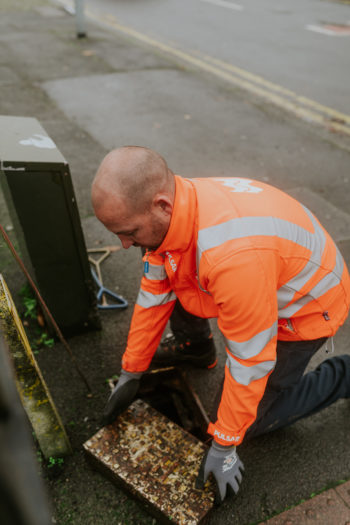Managing Background Leakage
Competition: Breakthrough 2: Transform
Amount awarded: £2,363,132
Led by: Dŵr Cymru Welsh Water
Partners: Affinity Water, Anglian Water, Severn Trent Water, Portsmouth Water, University of Sheffield, HWM, Invenio Systems
Expected completion date: May 2026
Water cycle tag: Water network
Water companies in England and Wales have Ofwat targets to reduce leakage by 15% in the current planning period to March 2025. Customers and regulators seek a downward trend in leakage which is seen as wasted water; but more importantly wasted power and chemicals for treatment and distribution, adding C02 emissions, impacting the challenge of achieving net-zero carbon, and adding to environmental water abstractions impacting ecology. The problem is c.50% of leakage is due to Background Leakage; defined as the sum of small leaks below a detectable threshold; generally accepted that it can’t be reduced. However, we believe some Background Leakage comes from old long-running leaks, not detected by current methods. This project aims to redefine the detectable limit of leakage to help pinpoint and repair hidden leaks and other factors contributing to background leakage. This benefits customers by creating more sustainable ways of reducing leakage, avoiding increased environmental water abstractions if future leakage targets can’t be met by current means.
“In this strategically important project for the water industry, we will challenge accepted wisdom regarding the nature of leakage in distribution systems. If we are successful in finding long-running leaks that have avoided detection, we potentially create new sustainable ways of meeting long-term aspirations to halve leakage at lower cost.”
Stuart Trow, Director, Invenio Systems, working in partnership with Dŵr Cymru Welsh Water.
—
Update from the project (April 2025)
The Phase A desk study exercise is complete, and a report is publicly available. Surveys of the 10 Phase B DMAs are complete, and the data has been analysed which shows significant variations in the level of customer night use, customer side leakage and network leakage. Customer side points of interest have been passed to the 5 water companies to be followed up. In two of the DMAs the network modeling and acoustic data has highlighted areas of interest for network side leakage an these areas have been re-surveyed using a different approach. In one of them a number of leaks have been found. In the other some potential points of usage have been found and the area will be e-modelled. Surveys of the 15 Phase C DMAs are in progress and are expected to be completed in June 2025. Phase D, the uncertainty analysis, has started but has been delayed although it is still expected to report by November.


